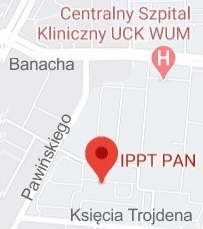| 1. |
Le Thi Ngoc Bao♦, Nguyen T., Do Muoi♦, H.N.T. Phung♦, Le Van Tan♦, Negative electronic compressibility in MoS2 monolayers,
PHYSICA B-CONDENSED MATTER, ISSN: 0921-4526, DOI: 10.1016/j.physb.2025.418022, Vol.720, pp.418022-1-10, 2026 Abstract:
The Coulomb-driven renormalization of electronic compressibility in monolayer MoS2 remains poorly understood at finite temperatures. Using the Rytova–Keldysh potential with a nonlocal dielectric response, we calculate the compressibility as a function of carrier density and temperature in experimentally relevant regimes. The exchange and correlation energies are treated, respectively, within the noninteracting (NI), Hartree–Fock (HF), and random phase approximation (RPA) frameworks. We demonstrate that the RPA, through enhanced screening induced by many-body correlations, yields negative values of the electronic compressibility,
in agreement with recent measurements resolved in temperature and density. At high temperatures ( Keywords:
Graphene, Quantum well, TMDCs, Compressibility TMDCs, Capacity quantum Affiliations:
| Le Thi Ngoc Bao | - | other affiliation | | Nguyen T. | - | IPPT PAN | | Do Muoi | - | other affiliation | | H.N.T. Phung | - | other affiliation | | Le Van Tan | - | other affiliation |
|  |
| 2. |
Nguyen T., Le Thi Ngoc Bao♦, H. N. T. Phung♦, Le Van Tan♦, Effects of electron-electron interactions on quasiparticle properties in transition-metal dichalcogenides monolayers,
Physical Review B, ISSN: 2469-9969, DOI: 10.1103/q18p-1mbk, pp.1-40, 2025 Abstract:
Coulomb-driven renormalization of electronic spectra in monolayer transition-metal dichalcogenides (TMDCs) remains poorly understood at finite temperature. Using the Rytova-Keldysh potential with a non-local dielectric response, we calculate quasiparticle band-gap renormalization (BGR) and the Fermi-edge absorption spectrum over experimentally relevant carrier densities and temperatures. Exchange and correlation self-energies are treated successively within Hartree-Fock (HF), the random-phase approximation (RPA), and the Hubbard local-field approximation (HFA). Only the HFA, which embeds the G(q) local-field factor, reproduces recent temperature- and densityresolved measurements: it broadens the band gap at low densities and produces a density-induced redshift of the Fermi absorption edge through enhanced screening. The same framework accounts for the nonmonotonic BGR observed in cyclotron resonance experiments on disordered monolayers when disorder-induced thermal broadening is included. The results establish a local-field-corrected many-body theory as the minimal quantitative description of carrier-doped TMDCs and provide a roadmap for engineering interaction-driven electronic phases in two dimensions. Affiliations:
| Nguyen T. | - | IPPT PAN | | Le Thi Ngoc Bao | - | other affiliation | | H. N. T. Phung | - | other affiliation | | Le Van Tan | - | other affiliation |
|  |
| 3. |
Thu T.♦, Phung H.♦, Nguyen T.♦, Kloczkowski A.♦, Li M.♦, Key Factors Controlling Fibril Formation of Proteins,
ACTA PHYSICA POLONICA A, ISSN: 0587-4246, DOI: 10.12693/APhysPolA.145.S21, Vol.145, No.3, pp.S21-S36, 2024 Abstract:
Fibril formation resulting from protein aggregation is a hallmark of a large group of neurodegenerative human diseases, including Alzheimer's disease, type 2 diabetes, amyotrophic lateral sclerosis, and Parkinson's disease, among many others. Key factors governing protein fibril formation have been identified over the past decades to elucidate various facets of misfolding and aggregation. However, surprisingly little is known about how and why fibril structure is achieved, and it remains a fundamental problem in molecular biology. In this review, we discuss the relationship between fibril formation kinetics and various characteristics, including sequence, mutations, monomer secondary structure, mechanical stability of the fibril state, aromaticity, hydrophobicity, charge, and population of fibril-prone conformations in the monomeric state. Keywords:
protein fibril formation, aggregation rate, neurodegenerative diseases, amyloid beta peptides Affiliations:
| Thu T. | - | other affiliation | | Phung H. | - | other affiliation | | Nguyen T. | - | other affiliation | | Kloczkowski A. | - | other affiliation | | Li M. | - | other affiliation |
|  |


















